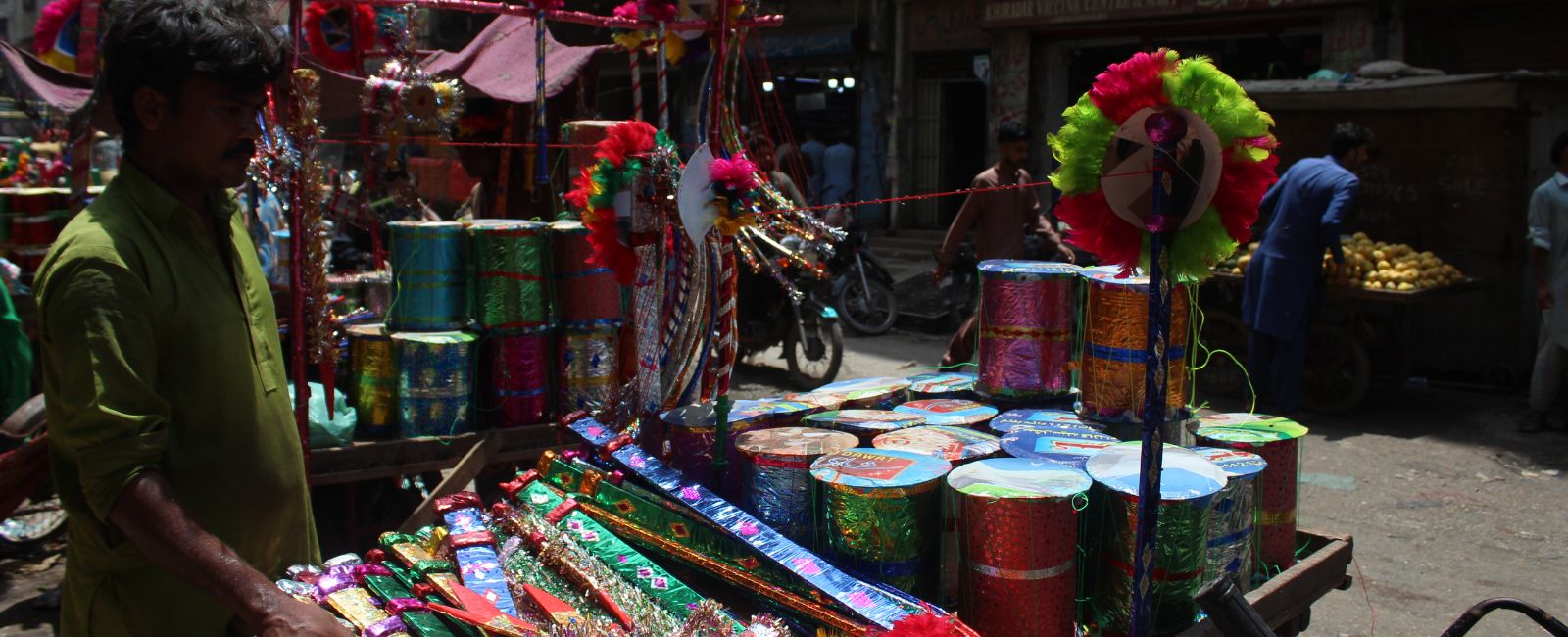The traditional toy sellers of Muharram

There was a time in Karachi when Muharram was not marred by terrorist attacks, sectarian violence, and security beefed up with behemoth containers shoved inside the narrowest lanes of the city. In fact, it marked the beginning of mourning and grief to honour the sacrifices of the Prophet’s (PBUH) family over 1,400 years ago.
Each part of the city had its own way to observe the holy month.
While some spaces reflected a somber atmosphere for the first 10 days, others exuded the spirit of cultural traditions and rituals rooted in South Asian history around Muharram.
In Saddar, for instance, annual processions were led by drum beats and colourful ta'ziyahs were decorated and placed on their designated spots, just around Maghrib prayers on the ninth of Muharram. Some flocked to have their wishes fulfilled by tying threads on the grills of ta'ziyahs, while others soaked in the whiff of sanctity and peace, amid the crowded streets.
A sabeel could be spotted inside most nooks and crannies handing out sharbat and water to passersby. But what captivated children from the neighbourhood were the vibrant stalls selling toys.
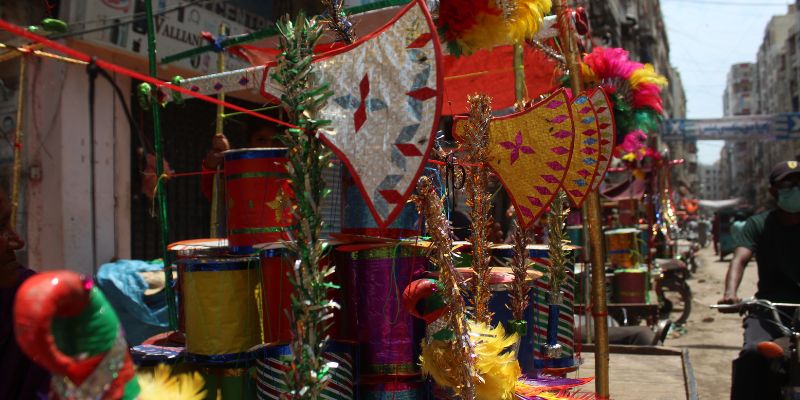
In areas including Saddar, Kharadar, Ranchor Line, and Soldier Bazaar, among others, these toy carts — at least for the children — were the highlight of Muharram. The kids were spoilt for choice while buying wooden swords, bows and arrows, swings, horse carriages, mini dhols, and much more — all intricately decorated with paints, fur, and chamak patti.
Settled on either side of streets, the toy carts, mostly owned by families of gypsies, who have been associated with the business for generations, brought joy to young children during a time of grief and mourning.
But today, these stalls have shrunk in numbers, due to security woes and rising inflation. Geo.tv spoke to some of the toy vendors about the troubles they face. Here are their stories:
A family business
“I haven’t slept well since we arrived in Karachi on the seventh of Muharram,” said Jhimri, a 63-year-old street vendor, who sells toys and has been associated with the business since childhood. A business that was passed on to her from generations.
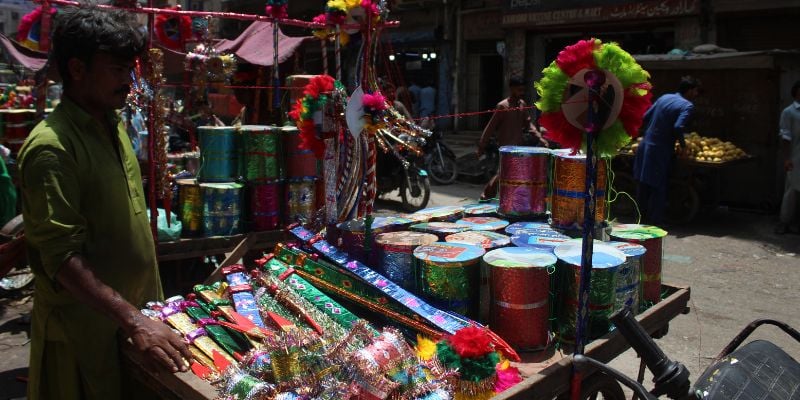
Every year, Jhimri journey’s from Jamshoro to Karachi during Muharram. She speaks Gujarati, but her Urdu is good enough for her to deal with customers.
“I was born in Karachi, but moved to Jamshoro after marriage,” she tells Geo.tv, “We come to Karachi annually during the last three days of mourning in Muharram.”
Jhimri complains about sleepless nights.
“I’m tired now,” the toy vendor confessed, “It’s difficult to make the journey, live on the streets while we’re here and not make enough money in the process.” At other times, when the 63-year-old gets some shut eye, her toys are stolen by drug addicts in the area.
During Muharram, Jhimri sets up shop on the roadside, which is also where her family lives while she works. Her family includes her husband, three sons and their children. While they reside on the sidewalk, people from the neighbourhood give them food and clothes to get by.
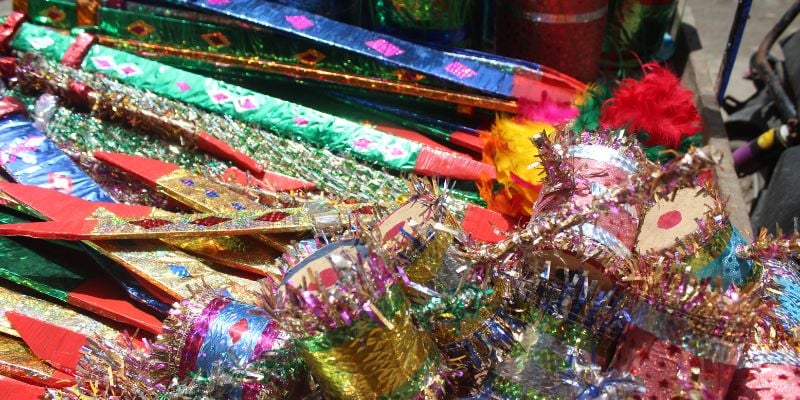
Today, seated on her cart, with toys scattered around her, Jhimri shares how Muharram was different when she was younger. People back then were kinder and life was easier. But now they are camped outside in the heat, surrounded by dirt and garbage. Two of Jhimri’s grandchildren fell ill recently due to the cheap hotel food they were consuming.
Yet, she must keep coming every year as she has to pay off the loans her family took. Not only that, this is a family trade for Jhimri and someone has to carry forward the family’s legacy.
Working in sickness or in health
“I don’t like doing this work, but I have to do it for my children,” Rani told Geo.tv.
No one in her family had ever sold toys, but after marrying her husband, Kishan, and having four children, she was forced to come to Karachi every year during Muharram to make ends meet. This is her fifth year as a street vendor.
Rani is Jhimri’s daughter-in-law. She and her husband have a separate stall.
The couple spend several months making the toys by hand. “It’s not easy making the toys,” the mother of four said, “We have to get the raw material from our own money or take loans.” To make a single fur cap or a colourful parrot, they have to buy chicken feathers for Rs1,000 per kilo and then paint them. While making a small dhol (drum), demands the labour of six workers, said Kishan.
“The dhol is not easy to make. While one person prepares the main body, another sews it with a thread, and after completing all stages, we paint it,” he explained, while nursing his youngest daughter, who is suffering from diarrhea.
“Our kids are sick,” Rani added, “but we have no other option but to sell all the merchandise and then leave after the 10th of Muharram.”
Hurt by inflation
Resting against a metallic luxury car on Saddar’s Mansfield Street, Poonam manages her toy stall at the corner of a lane. She lives in Karachi’s Lyari area but comes to this spot every day to sell her merchandise.
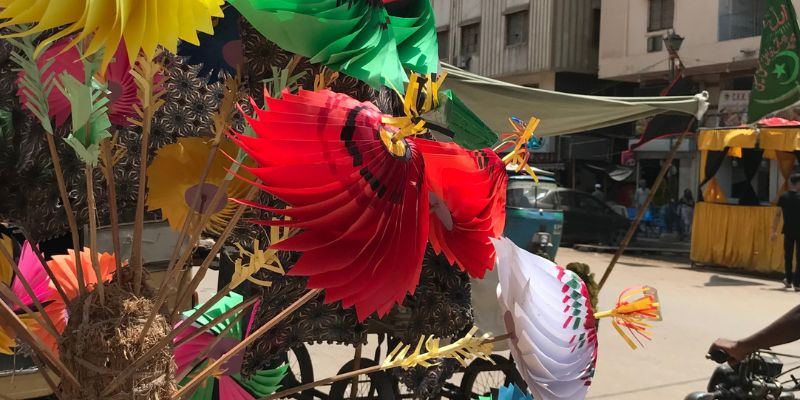
"At night when we’ve done with our sales, we pack up and leave,” she told Geo.tv, “The only night we stay for a longer duration is the ninth of Muharram. On the day we stay till around 4 am."
The Lyari-resident belongs to the Hindu community. Her family has been selling toys for several decades now. But things are becoming difficult for her and her family now. Earlier they would go home after selling everything on their cart. Now, few toys get sold.
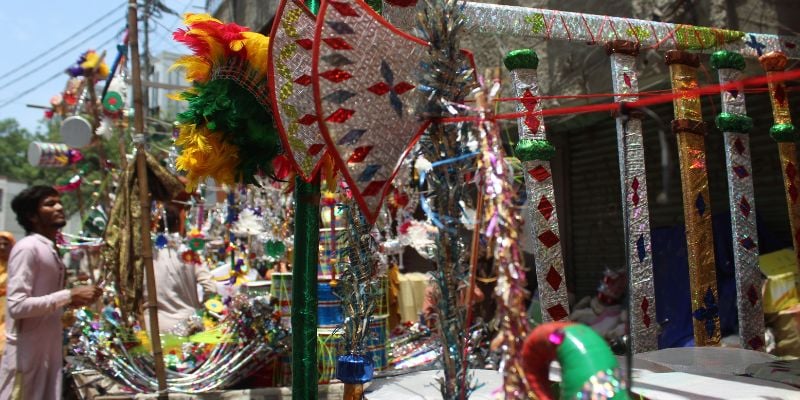
“It has been difficult for us to earn a decent living with the rates of raw material increasing day by day,” she said.
With inflation and rising prices, Poonam’s customers are careful with how they spend. “The most-expensive item on my cart is the dhol and the parrot, and both costs around Rs.200. Even though children like it, their parents don’t buy these items. They instead buy their children a mini dhol for Rs40, because it is the cheapest,” she said.
The boy who sold toys
The teenager Saagar sells children’s toys on Saddar’s Mansfield Street. He comes here every day with his sister, Chanda, and cousin, Ramesh. All three are residents of Dumba Goth, located near the Super Highway.
Most of the toys Saagar sells are made of paper, so bad weather means no sales for him.
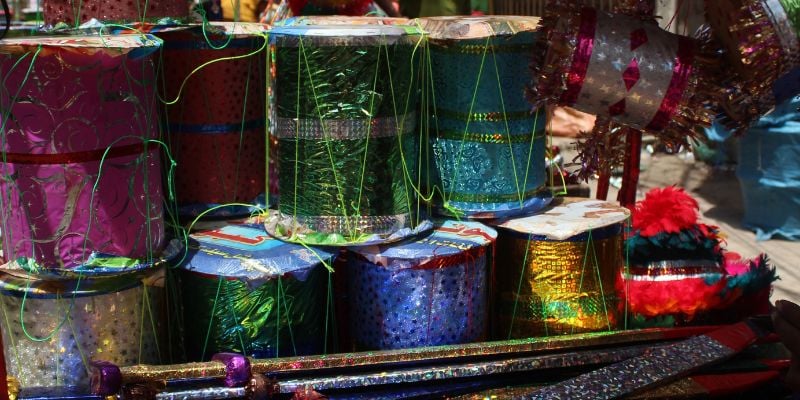
Since July, Karachi has been witnessing spells of heavy showers and urban flooding. “The rain ruins the toys,” he said, “Once they’re drenched in rain, they’re of no use. We try to keep them safe by using a plastic sheet above our carts.” But that rarely helps.
The bribes and the corrupt cops
Weather and inflation are not the only problems street vendors face in the city. Corrupt police officials are another.
Settled under the shade of a torn bed sheet, sisters, Lalita and Samina, have spread out toys on a piece of cloth, rather than on a wooden cart. Every Muharram, they come to the Daud Pota Road to sell their toys.
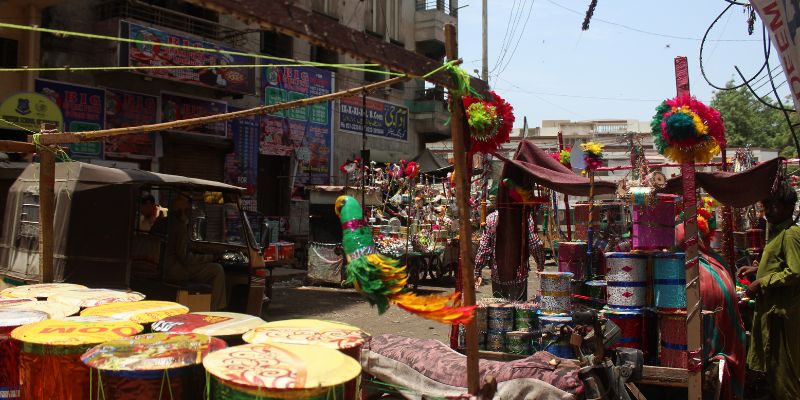
“Police visit us several times during the day and demand bribes,” said Samina, adding that the sisters already earn less these days due to rising prices, and whatever little they do earn is given off as bribes.
Kammi, 40, who has a stall on the other side of the road, shared the same complaint. “We give away bribes more than what we make by selling toys,” she said. “We are not begging,” Kammi added, “We earn an honest living.”



